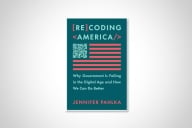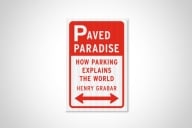You have /5 articles left.
Sign up for a free account or log in.
“We are headed for a time of brutal unmasking” - The End of College, p. 249
Back in the 90’s, there was a brief flurry of interest around the demise of the “public intellectual,” who was informally understood to be the sort of person who wrote about Big Ideas in accessible language for general readers. Public intellectuals bestrode the planet for decades, the story went, before being sucked into the careerist and jargon-ridden quicksand of academe. While many of the Big Ideas championed by public intellectuals were badly flawed, if not loopy, their disappearance didn’t bring about a new age of enlightened discourse.
Kevin Carey’s new book, The End of College, has some of the trappings of the old public intellectual model, except that it puts academe at the “before” part of the story, rather than the “after.” It’s a sprawling book with a loose narrative and a broad topic, clearly intended more to start debates than to settle them. It has the appeal and the flaws of the form.
Its argument runs something like this:
1. Higher education serves multiple purposes, each of which conflicts with the others. The big three are job training, scholarly research, and liberal arts education.
2. Historically, the emergence of the research university that also teaches undergraduates was a contingent, but relatively successful, way to paper over the conflicts among the goals.
3. The vast postwar expansion of public higher education was a largely unthought-through case of “institutional isomorphism,” in which new and lower-tier entrants aped the structures of elites, whether they made sense or not. The awkwardness of fit didn’t matter when demographic tailwinds were strong, but they’re apparent now.
4. Teaching gets short shrift in what Carey calls the “hybrid university” model. Professors are not hired or evaluated for teaching ability, and idiosyncratic grading and the elective system have defeated attempts at curricular coherence or assessment.
5. Most undergraduates don’t actually learn very much, and the incumbent providers would rather not focus on that, for obvious reasons.
6. Colleges systematically ignore the findings of psychology and cognitive science on how people learn. Academic freedom and the elective system benefit incumbents, and they will use both to defeat serious efforts to change how teaching is done. The existing mode of educational production is artisinal, and artisans will fight to protect their autonomy, even at the expense of productivity.
7. Until recently, there were no practical alternatives to traditional higher education. But the internet has changed that.
8. A bevy of internet startups are using the insights of cognitive science to teach more effectively at scale, and at much lower cost.
9. As those internet startups mature, they will develop a more robust system of recognizing student achievement -- “badges” or whatever else -- which will quickly gain traction.
10. As higher education loses its monopoly on certification, most non-elite institutions will die. That will be unfortunate for the people who work there, but a net gain for society as a whole.
Along the way, Carey notes in passing that the most rapidly developing countries with the largest ascending middle classes aren’t replicating the American system. It’s too clunky, expensive, and inefficient. We shouldn’t assume that institutions born in another time are automatically relevant to this one. As it happened, Sweet Briar College announced its closing on the day that Carey’s book was released, as if to illustrate his point.
The “hybrid university” model is Carey’s focus; the book spends comparatively little time on community colleges, liberal arts colleges, or small private niche institutions like Sweet Briar. The larger political economy goes almost entirely unmentioned in the book, except to the extent that Carey notes the rapid rise of tuition since the 1980’s.
Much of what Carey covers is hard to dismiss. He notes the bait-and-switch by which bright undergraduates are lured to research institutions with the implied promise of rubbing elbows with great scholars, only to find themselves taught instead by barely-prepared graduate students, overstretched adjuncts, or professors who minimize time on teaching in order to focus on the research that actually matters for their careers. The observation may not be original, but it’s largely true. Carey’s contribution is to note that with the new emergence of actual alternatives that draw upon the science of learning, the bait-and-switch will become harder to sustain. No one institution will be able to pretend to be all things to all people anymore; the path to survival will instead come from focusing on what it can do better than anyplace else. The “brutal unmasking” of the next few years will make the grand bargain of the hybrid university model unsustainable. When the bundle is unbundled, cross-subsidies will become impossible.
At the same time, though, Carey’s treatment elides the larger political economy in which these changes may be happening. The massive buildup of state college and community college systems within about a twenty-year window in the mid-twentieth century was a response to a political and economic imperative to open up pathways to the new middle class. They were public responses to a public need. That’s not true of most of the new forms emerging now. Some are for-profit, albeit of a different stripe than Phoenix or DeVry. Others are foundation-driven, or offshoots of existing elites.
That’s not just a difference of bookkeeping; it’s a difference of mission. Carey rightly celebrates the thirteen-year-old in Mongolia whose talents rise to the top in an EdX MOOC. But he doesn’t note what happens to the student who, like he did, got a B. B students are not the point.
Yes, existing public institutions can be faulted for a level of sameness in how different students are treated. (One of the defenses of the elective system is that it’s an attempt to address that.) That sameness can lead to a certain mediocrity.
But that sameness also serves as a minimum. This is not to be dismissed lightly.
As with Anya Kamenetz’ DIY U, which Carey’s book resembles in some ways, there’s a strange reluctance to address what “unbundling” does to the non-elite student. Yes, it’s great that the hidden prodigy in another country now can rise to the top. But most people aren’t prodigies, and a system that requires them to be is set up to fail.
Institutions are prone to pathologies, yes, but they exist in the first place to lower transaction costs. The “bundling” that may seem inefficient to the high-achieving autodidact is a life support system for the average student. If we want average students to succeed, we should think long and hard before attacking their life support systems.
It’s possible to use some of Carey’s points to make a very different argument. The entire “Guided Pathways to Success” (GPS) model championed by Complete College America assumes that there’s some truth to the critique of the elective system, but responds by advocating a more directive role by institutions. And there is warrant for that. Carey spends very little time discussing the “job training” part of the hybrid role, but if he did, he’d notice that employer advisory boards often wind up championing the very liberal arts skills (communication, most notably) that they’re usually assumed to reject. The “dev bootcamp” nine-week crash course model works best for people who already have full degrees behind them.
And from the perspective of someone working in the community college world, I have to take exception to any claim that the major drivers of increased cost are faculty research and lazy rivers. In my sector, that’s simply false. The major driver of increased cost to students -- not increased spending, which has been flat for a decade and a half -- has been public disinvestment. Using the “hybrid university” model as a synecdoche for all of higher education gets other sectors importantly wrong. Tarring teaching-intensive institutions with that critique may be brutal, but it’s not unmasking. It’s mystifying.
Carey’s celebration of the new alternatives is troubling mostly because he doesn’t look closely enough at why they exist. MIT use EdX, unapologetically, as a form of talent-scouting. Coursera uses MOOCs to make money. Those are both fine, as far as they go, but neither is ultimately about achieving a public purpose. For that, you need public institutions.
To the extent that we can create or re-shape public institutions to take more thoughtful advantage of technology and cognitive science to provide better education for the many, I’m fully on board. But replacing public institutions with private ones, tech-savvy or not, means replacing a public mission with a private one. The latest hot startups in Silicon Valley may only be interested in the top one percent of programmers, and that’s their prerogative. To the extent that they develop tools to find the folks they want, so be it. But as a citizen in a representative democracy who cares about a large and open middle class, any system built to pluck out the prodigy from the pile misses the point. We need to raise the pile.
Carey’s analysis never addresses the public as a public. It implicitly accepts Margaret Thatcher’s famous line that “there is no such thing as society,” and assumes that we can infer public preferences from the aggregation of individual ones. That’s the kind of category error that the old public intellectuals rarely made. Sometimes to a fault, they understood that the whole isn’t just the sum of its parts. Absent that understanding, it’s easy to miss the point.
Tech tools are great, but they’re no substitute for mission, which is the sort of thing that public intellectuals used to address. What kind of society do we want? How should we live together? The “end” of college could refer to its conclusion, or it could refer to its purpose. If we want a society of ever-increasing economic and epistemic polarization, we can replace colleges with apps. But to the extent that we believe that average people matter, we need institutions that make it possible for them to succeed. Community and state colleges have their flaws -- longtime readers may have seen me mention one or two -- but they have a public mission. To the extent that the new tools enable educators to serve the entire public better, bring ‘em on. But if we’re just looking to liberate needles from haystacks, well, I’ve got some brutal unmasking to do.



